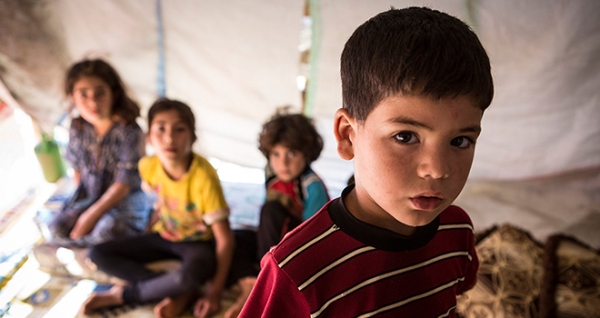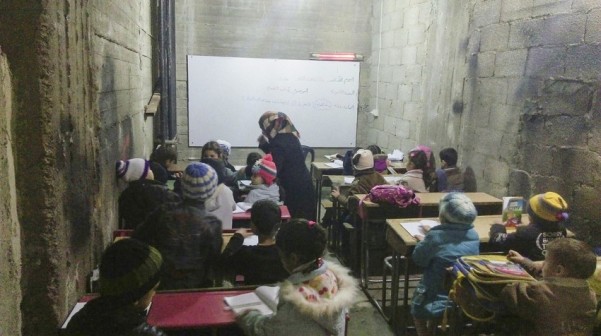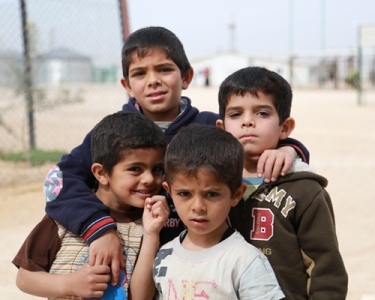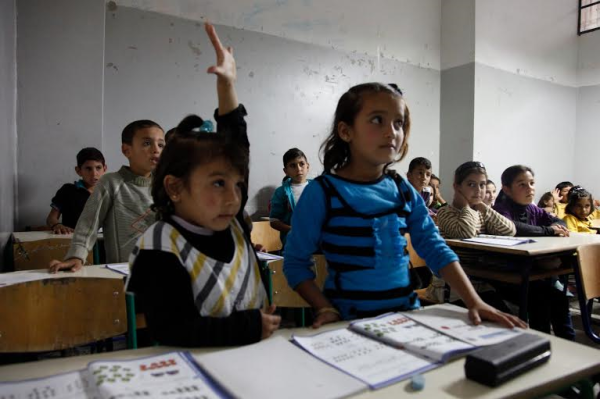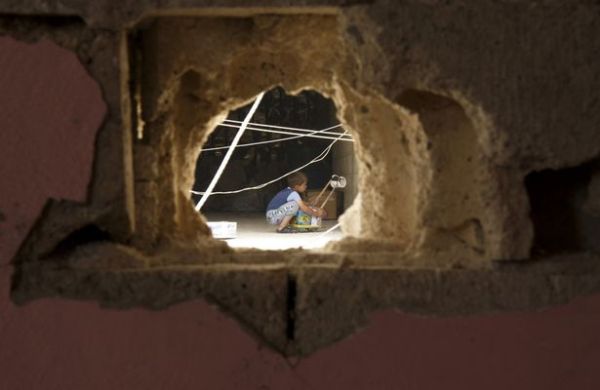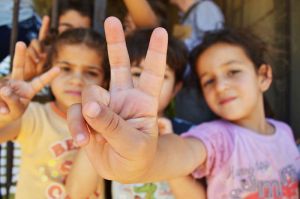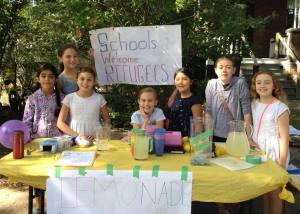
Ibrahim Sultan, centre in blue sweater, lines up outside his new classroom at George Webster Public School in Toronto, where he is starting Grade 5. The Syrian refugee recently arrived in Canada with his familiy from Lebanon. (STEVE RUSSELL/TORONTO STAR)
December 2016 marked one year since the first wave of Syrian refugees settled in Canada as part of the federal Liberal government’s project to welcome 25,000 refugees. The year since their arrival brought with it hopeful, inspiring stories of Canadians coming together to welcome newcomers. Canada has received a great deal of acclaim from the international community about its approach to refugee sponsorship and is being held up as a model for other countries.
Support for Syrian children and youth going to school was recognized as a priority. In spite concerns of that government support was (and continues to be) insufficient to accommodate and meet the needs of students, Canadians have demonstrated compassion for the struggles of newcomers, and enthusiasm to lend a hand. School boards launched a program that allowed Syrian children and youth temporarily housed in hotels to attend school, school communities raised funds to sponsor refugee families, and teachers organized their students to write welcome cards for newcomers and deliver them to Parliament Hill.
However, despite all of these examples of genuine goodwill, recent world events have served to undermine these sentiments and Canada is not immune. Reaction to the recent Quebec mosque shootings and political developments south of the border are instead speaking to a shift toward Islamophobia. We are seeing a rising tide of fear and intolerance in a time where there is increasing need for inclusion. Hate crimes are committed against the LGBT community, racial, religious and other minorities, and with this, an approach to inclusion must address all of these realities. Yet Muslims have faced a sizable amount of the hostility. In 2014, the latest year for which statistics are available, Canadian police recorded 99 religiously motivated hate crimes against Muslims — up from 45 in 2012, according to Statistics Canada.
Opening doors to welcome refugees to Canada is only the first step of the process towards meaningful integration. The real work of ensuring social inclusion is a much longer-term investment. But the classroom is where many important values such as openness and embracing of diversity are born. Schools should not just accommodate newcomers, Muslim pupils, and their families; especially in the current climate, schools must serve as a space of safety and support.
How Teachers Can Ensure Safe and Supportive Learning Spaces
Many resources are available to help teachers and school administrators ensure safe and supportive classrooms, and encourage students to embrace diversity more generally. The National Council of Canadian Muslims, the Islamic Social Services Association and the Canadian Human Rights Commission have created the guide, Helping Students Deal with Trauma Related to Geopolitical Violence and Islamophobia. It provides guidance on supporting students who are dealing with grief, fear and confusion, which can help to create a safer classroom environment.
The Harvard Graduate School of Education has also put together a comprehensive list of tips, additional resources and research studies on how schools can work to address bullying and dismantle Islamophobia. The resources can be found here.
Social emotional learning (SEL) is another process that can be purposefully integrated into classroom settings to build trust and mutual respect among students. The Collaborative for Academic, Social and Emotional Learning in the United States has several resources for explaining SEL, and approaches and tools for school-based implementation.
The US-based Committee for Children also published a list of recommendations for teachers to help children feel safe and supported in this new era. Oxfam UK has compiled comprehensive guidance on how to create “schools of sanctuary”. Major publishing houses have also developed lists of books to help children understand the plight of refugees.
How Children Can Take Action
The goal of all of this work is to help children and youth navigate the new geopolitical landscape. Schools can empower students to think critically about the information they are receiving, make thoughtful decisions in determining their own values and place in these discussions, and finally to take action. All schools have homegrown approaches and opportunities for student engagement. Samara Canada, provides a variety of resources for classrooms here, here and here. Oxfam UK has a useful resource on how to teach controversial issues in the classroom. Radical Teacher, an academic journal on teaching theory and practice, has a resource page with lesson plans on a wide variety of current political issues including the U.S. immigration ban.
In this unpredictable, uncertain political climate, business as usual is insufficient. Teachers need targeted strategies to ensure safe and supportive environments for their students and to promote a school ethos based on inclusion and respect. Students need avenues for peaceful, meaningful engagement in issues that affect them. Both teachers and students have a critical role to play – keeping fear out of Canadian classrooms depends on it.

